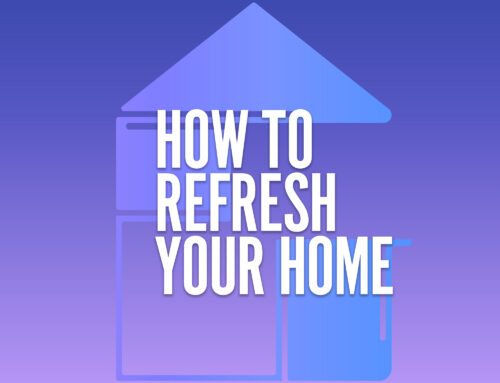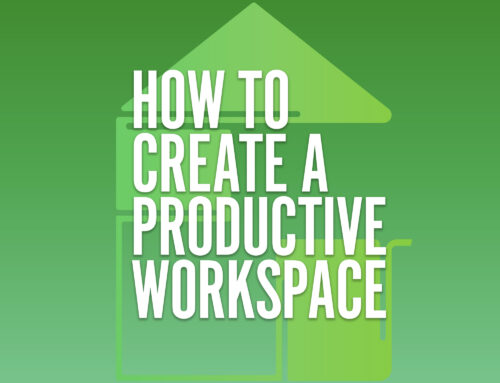For some of us, it’s a natural inclination– there’s a desire to make our living spaces a place of refuge, a haven. Kids, for instance, often create cozy spaces – they build pillow forts, fill their beds with stuffed animals or create blanket houses. Yet as we get older, we sometimes forget how good it feels to curl up in a space that feels warm and welcoming. We may not realize just how much of an impact our physical space has on our mental state. But think about how differently you feel entering a dark, cluttered room as opposed to a bright and airy one.
“It takes a lot for people to recognize how their space affects them, to essentially put themselves first and focus on the importance of their own space,” says Mika McLane, MPS, LCAT, ATR, CCLS, of Westchester Creative Arts Therapy. “I encourage everyone to ask themselves: Have I taken the time to create an environment where I can thrive?”
Science has proven that our mental health is affected by our physical environment. Researchers have studied everything from how neat or messy a space is to the amount of light and the color on the walls. Even textures and sounds play a part. Creating a safe, comfortable place where you can relax and recharge is proven to boost your mood. Here’s how you can achieve that in your own home.
Out with the Old, In with the New
Your home should be a place of comfort and contentment, not a source of stress. And while it may seem overwhelming to clear out all the piles and get organized, once done, you’ll feel a greater sense of ease every time you walk through your home.
“If our space is chaotic or cluttered, it’s a microcosm of what’s really operating inside our heads – it’s telling us that we need to make some space in our minds, clear out the excess,” explains Jennifer Zauner, LCSW, clinical director of Sirona Therapy in Mount Kisco. “A great way to start that process is by clearing out our physical space.”
After you’ve cleared out and organized your spaces (see page 18), slowly bring new items in.
- Keep it simple; don’t over-decorate.
- Only fill your space with objects that are uplifting or meaningful; sell or donate items that aren’t.
- Remember that your house is meant to be a living-space, not storage for the stuff you don’t use.
Brighten & Lighten Your Rooms
According to the Newport Institute, light plays an important role in physical and mental health. It’s what tells us when it’s time to sleep and wake; if it’s too bright at night, it will disrupt our sleep. And, our sleep habits are closely linked to our mood. Plus, too little natural and/or artificial light in our rooms can increase our stress and anxiety, which also alters our mood.
To improve your lighting:
- Use lamps or overhead lighting that you find soothing. For example, soft light bulbs produce a more yellow light, which is warmer and cozier.
- Keep curtains open or replace curtains with blinds.
- Position mirrors on the walls across from windows to double the natural light that comes in.
“Colors create the mood in your home,” McLane explains. “Researchers have found that different colors have varying affects on a person’s mood. Soft, warmer tones are healing and soothing colors. For a livelier, more energetic feel, you’ll want to go with richer, brighter colors. Look at how you feel when you see the color bright red versus calming blue. When you think about the color of your space, ask yourself what kind of environment you’re trying to create – energized or calm?”
If you’re going for a more peaceful vibe, a good first step is to paint one wall of your room a soft shade of white or pastel to reflect light and create a sense of calm. If you’re drawn to cooler or brighter colors, then see how it feels to add some neutral-colored throw pillows, blankets, decor pieces, artwork or other accents while keeping your walls a brighter shade.

Create Ambience with Scents
We’ve all had the experience of smelling something that calls up a positive memory and lifts our mood, even if it’s just for a moment. That’s no accident; our sense of smell is located in the same part of the brain that processes our emotions.
So, it would stand to reason that our home should smell like good memories. But if you don’t know what scents evoke that good feeling, you’re not alone. Time to experiment!
Start by visiting a store that sells essential oils or perfumes and smell each of their testers to see what you prefer. Once you find your ideal scents, look for diffusers, incense, candles and room sprays that contain one or more of your favorite fragrances.
Add Some Texture
The right tactile elements can enhance the coziness of your interior; they feel good in your hands and on your body, and they offer lots of eye appeal. Incorporating different textures can also create a sense of depth and warmth in your space.
“Texture is important because touch is a part of our five senses,” Zauner explains. “At Sirona Therapy, our clients have many things to touch, including soft blankets on the chairs and couches, aesthetically pleasing soft pillows, stones and rocks, fidget spinners, crystals and pottery pieces.”
Incorporate a variety of textures in every room. An easy place to begin is by adding a textured wool throw or knit blanket on your sofa. You can also add a wooden table, chairs with textured upholstery, grass cloth wallpaper or textured ceramic pieces.
Bring the Outside In
We live in an overly connected world, and we have fewer moments of quiet and stillness these days. Nature helps! If you can’t get out into nature as much as you’d like, or you just want a more grounded home, bring nature inside.
Elements that can add an earthy feel:
- Ceramics
- Photos of nature
- Plants & flowers
- Small herb gardens
- Table-top water fountains
- Unfinished wood pieces
- Wood floors
Take Your Time
Most people can’t turn their home into a haven overnight, especially if children and animals are in the mix.
“Take it slow, and don’t try to transform your whole space all at once” says Zauner. “Even simple things can have an impact. You can add accent accessories – such as a throw pillow, a rug or flowers in a pretty vase, put candles in every room, and hang art you love on the walls (see page 60). You can also arrange your seating area in a way that facilitates conversation.”
And don’t feel like you need to spend a fortune – this shouldn’t break the bank!
“Your investment in your space doesn’t have to mean spending a lot of money,” says Mclane. “It’s more a matter of investing the time to determine what you really want from your space.”
Haven-ing your space should be a pleasurable project, so give yourself the time to enjoy it and do it right.
This article was published in the January/February 2023 print edition of Katonah Connect.

Elizabeth Kemler
Elizabeth Kemler is a seasoned curriculum designer, social entrepreneur, performer and mental health advocate. She has 25 years of experience supporting the development of clients’ communication skills, social-emotional competence, and mental health through dynamic programming, courses and wellness-based goods and services.
You can find Elizabeth's mental wellness courses here and visit her shop here.










